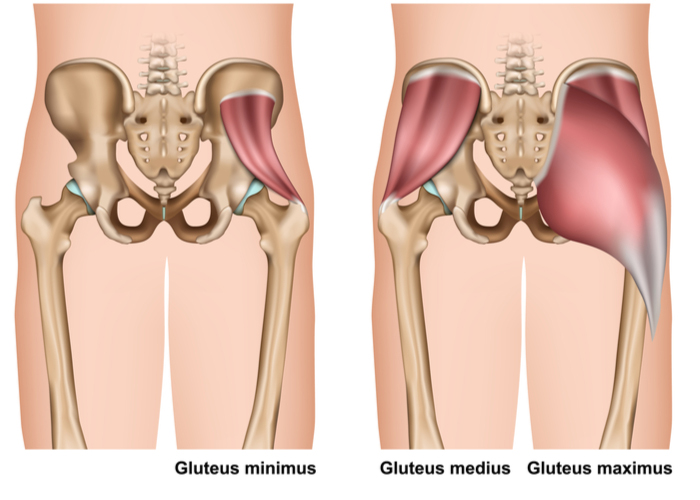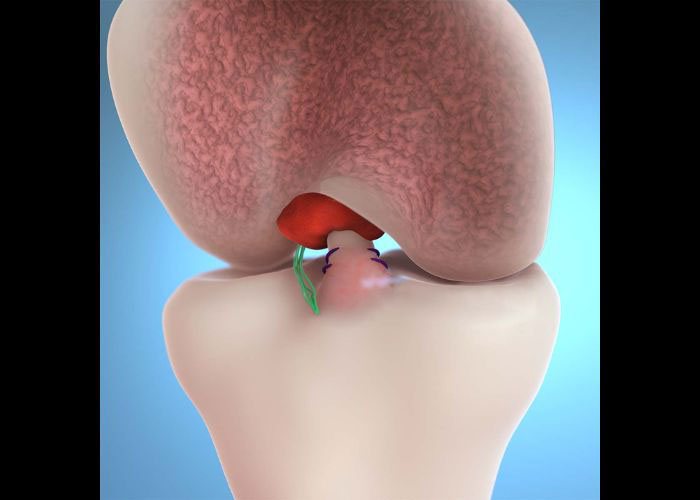Schedule an Appointment with a Hip Abductor/Gluteus Tear Specialist

The hip abductors are major muscle groups in the buttocks that are responsible for providing strength, control, and balance to the lower body. Injuries to these muscles are most often caused by blunt force trauma such as a motor vehicle accident or high-contact sports. Orthopedic hip specialist Doctor Ronak Mukesh Patel has experience diagnosing and treating patients in Houston, Sugar Land, and Pearland, TX that have sustained an injury to the hip abductors. To receive a personalized treatment plan, contact Dr. Patel’s team today!
What is a hip abductor?
The hip abductors are a group of four muscles found in the buttocks: the gluteus maximus, gluteus medius, gluteus minimus, and the tensor fascia lata. This muscle group is important for abduction, the act of moving the leg away from the middle of the body, and rotation of the leg at the hip joint. Performing these movements gives the human body the ability to walk, get out of the car, and step to the side.
What are the gluteus medius and gluteus minimus muscles?
The gluteus medius and gluteus minimus muscles are large, fan-shaped muscles located along the outer buttocks that are attached between the ilium portion of the pelvis and the greater trochanter of the femur (bony prominence on the thigh bone). These hip muscles provide the muscular strength for keeping the hips aligned in addition to maintaining lower body control and balance.

What is a hip abductor tear?
Hip abductor tears often occur due to a degenerative process and can be related to other conditions such as trochanteric bursitis (hip bursitis), iliotibial (IT) band syndrome, osteoarthritis, etc. Individuals that experience a hip abductor tear often encounter lower back pain, an abnormal gait, and pain in the buttocks. A hip abductor tear can also occur from blunt force trauma, such as a motor vehicle collision, a football tackle, or a fall directly on the hip. This results in the connecting tendon becoming partially or completely torn away from its attachment site on the femur in an area called the greater trochanter. The most common cause of a hip abductor tear is degeneration of the tendon with aging. Because of their anatomical location, the tendons attaching the gluteus medius and gluteus minimus muscles are the most susceptible to an injury or tear. Dr. Ronak Mukesh Patel, orthopedic hip specialist serving patients in Sugar Land, Pearland, and the Houston, Texas area, has the knowledge and understanding as well as substantial experience in treating patients who have experienced a hip abductor tear.
A blunt force trauma, such as a fall directly on the hip, can result in the partial or complete detachment of the connecting tendons from their attachment site on the femur (thigh bone) in an area called the greater trochanter. The most common cause of a hip abductor tear is degeneration of the tendon with aging. Patients often experience or have been diagnosed with trochanteric bursitis or hip bursitis. Patients with a confirmed hip abductor tear often experience pain in the side of the hip, buttocks, an abnormal gait, and lower back pain.
What are the symptoms of a hip abductor tear?
A commonly reported symptom of a hip abductor tear is pain along the outer portion of the affected hip that may worsen with activities of daily living. Some other symptoms of a hip abductor tear can include:
- Pain on the outer hip
- Lower back pain
- Deep ache or throbbing in the hip and/or buttocks
- Limited mobility or limping
- Pain when sleeping on the side of the hip
- Trendelenburg’s sign – a pelvic drop towards the non-injured side because the affected side will not be able to bear weight
How is a hip abductor tear diagnosed?
Dr. Patel will obtain a comprehensive medical history and perform a thorough physical examination evaluating strength and assessing lateral hip tenderness and inflammation. Diagnostic imaging, such as x-rays, can determine if any bone-related injuries, such as a fracture, resulted from the injury. X-rays can also identify abnormalities on the greater trochanter of the hip for enthesophytes or sclerosis which may be a sign of abductor tendon problems. Magnetic resonance imaging (MRI) is often the best diagnostic imaging tool for confirming a hip abductor tear while also identifying any damage to the surrounding soft-tissue structures.
What is the treatment for a hip abductor tear?
Non-surgical treatment:
Patients that sustain a small hip abductor tear with the tendons still intact, no mobility loss, or weakness can utilize non-surgical treatment measures to reduce pain and improve mobility and range of motion. Avoiding unnecessary hip movements or major physical activities is encouraged while the injury heals. The pain and inflammation is often managed with a combination of rest, ice, non-steroidal anti-inflammatory medications (NSAIDs), steroid injections, and/or other injections. If necessary, a physical rehabilitation program can be prescribed by Dr. Patel.
Surgical treatment:
However, in the event of a complete tendon rupture, or non-surgical treatment measures fail, surgical intervention may be required to reattach the tendon. Dr. Patel may perform a minimally invasive endoscopic or open surgical procedure depending on several factors, such as the patient’s age, activity level, medical history, injury severity, associated injuries, and recovery goals. The damaged tendon fragments are excised and any irregularities, such as inflamed tissue or bone spurs, are removed. If necessary, the iliotibial (IT) band can be lengthened to decrease the pain associated with bursitis of the hip. The remaining tendon is situated in the correct anatomical position and fastened with special surgical anchors that are secured within the bone. In cases of a long-standing (chronic) tear, a reconstruction of the tendon may need to be done with allograft (cadaveric) tissue to strengthen the tendon for healing.








